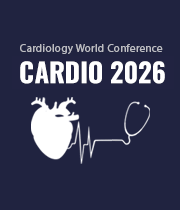Title : Assessing referral and participation in cardiac rehabilitation following coronary artery disease
Abstract:
Background: Cardiac Rehabilitation (CR) is a well-established secondary prevention strategy that plays a pivotal role in improving cardiovascular outcomes for patients with Coronary Artery Disease (CAD). It has been shown to reduce mortality, recurrent cardiac events, and hospital readmissions while enhancing functional capacity and quality of life (Anderson et al., 2016; Dalal et al., 2019). The NICE (NG185) and the British Association for Cardiovascular Prevention and Rehabilitation (BACPR) strongly recommend CR participation as part of standard post-discharge care. Despite its proven benefits, referral and uptake of CR remain suboptimal.
Aims: To assess compliance with national guidelines on referral to cardiac rehabilitation for patients admitted in CCU with coronary artery disease (NICE Guideline NG185).
Standards and Guidelines:
- NICE Guideline NG185: Recommends referral to cardiac rehabilitation for all eligible patients with coronary artery disease.
- Target: 100% of eligible patients should be referred to cardiac rehabilitation.
- Sample:
- Inclusion Criteria: Patients admitted to the CCU with a diagnosis of coronary artery disease (acute coronary syndromes, chronic coronary syndromes, post-revascularisation, and microvascular and vasospastic coronary disease).
- Exclusion Criteria: Patients admitted for other cardiac conditions (e.g., heart failure, arrhythmias). Patients with documented contraindications to cardiac rehabilitation.
Methodology:
Data Collection:
- Review the records of a random 100 patients discharged from CCU at the Countess of Chester with a coded diagnosis of one of the previous diagnoses between January 2024 and February 2025.
- Review the admission notes and investigations to identify patients with a confirmed diagnosis of CAD.
- Extract data from EPR and cardiac rehabilitation records to identify who was referred to CR.
- Use a structured data collection form to record:
- Discharge diagnosis.
- Referral to cardiac rehabilitation (Yes/No).
- Documentation of patient contact by rehab team.
Data Analysis: Calculate the percentage of eligible patients referred to cardiac rehabilitation.
Recommendations & Action Plan:
- Share findings with the cardiology and rehabilitation teams.
- Develop strategies to improve referral rates.
Findings:
- Total records collected: 100.
- Total eligible patients: 77.
- Referred to Cardiac Rehab (CR) according to different sources:
- Hospital IT Coding: 49 (63.3%).
- Formal Cerner System Referral: 23 (31.17%).
- Cardiac Rehab Spreadsheets: 75 (97.4%).
- Referral Acceptance in Chester: 55 (71.4%).




